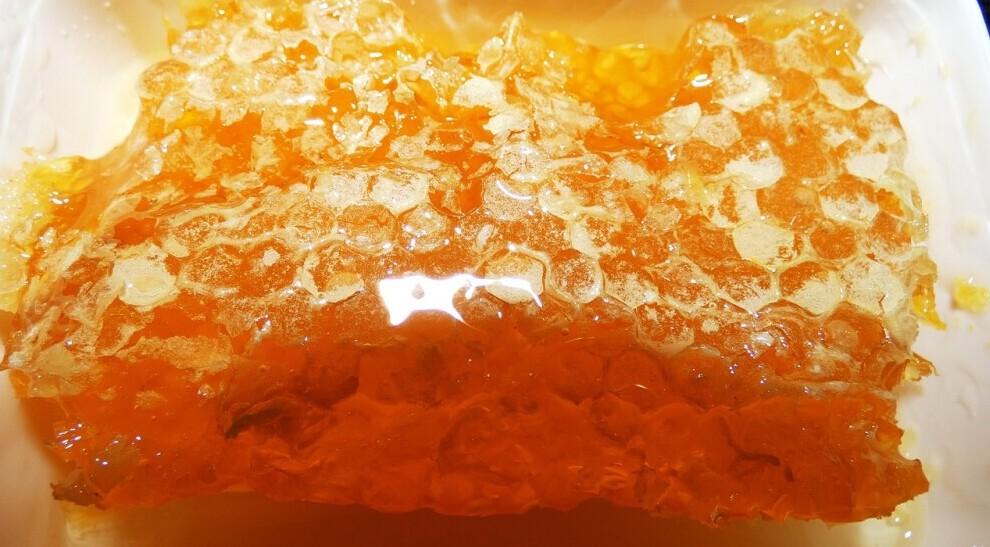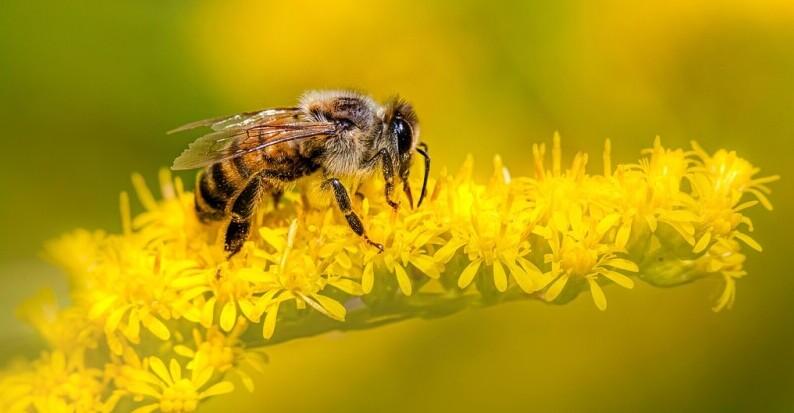Honey has long been cherished not just as a natural sweetener, but as a remarkable superfood loaded with powerful health benefits. Packed with antioxidants — especially polyphenols and flavonoids — it helps protect your cells from oxidative damage, supports a strong immune response, and calms inflammation. But honey benefits do not end there.
Honey’s magic comes from its natural antimicrobial properties, stemming from hydrogen peroxide, low pH, and unique bioactive compounds. Thanks to them honey can not only aid in wound healing but also soothe coughs and throat irritation.
Plus, its natural sugars (fructose and glucose) offer an instant energy boost — perfect for athletes, students, or anyone hitting a midday slump.

In this guide, we’ll dive deep into how honey delivers on these claims and why it deserves a spot in your daily routine.
- What’s Inside Honey? (Nutrients & Composition)
- How Honey Is Made (Why It Matters for Quality)
- Types & Textures of Honey
- Health Benefits of Honey
- Raw vs. Processed Honey
- Heating Honey: Do's and Don'ts
- Best Time to Consume Honey
- Honey vs. Sugar: Which Is Healthier?
- Tips for Getting the Most Out of Honey
- Honey Benefits FAQ
What’s Inside Honey? (Nutrients & Composition)
The chemical composition of honey is quite fascinating. It’s primarily composed of such monosaccharides as fructose and glucose, making up about 70-80% of its sugar content. Alongside these sugars, honey contains water (roughly 15-20%), vitamins, minerals, and enzymes. These trace nutrients contribute to honey’s antioxidant and antimicrobial power.
| Key Nutrients in Honey: | |
| Nutrient | Function |
| Polyphenols & Flavonoids | Antioxidant activity, reduce oxidative stress |
| Glucose Oxidase | Produces hydrogen peroxide, antibacterial action |
| Potassium, Magnesium, Calcium | Support muscle and nerve function |
| B-Vitamins, Vitamin C | Energy metabolism, immune support |
Flavonoids & Polyphenols in Honey: What They Are & Why They Matter
1. Polyphenols
A broad class of plant-based antioxidants — found in fruits, tea, cocoa, and honey. In honey, phenolic acids and flavonoids can act as markers of floral origin and are tied to health benefits like anticancer, cardiovascular protection, anti-inflammatory, and neuroprotective effects.
2. Flavonoids
A subgroup of polyphenols (e.g., quercetin, kaempferol), with strong antioxidant, anti-inflammatory, anticancer, and antimicrobial properties. They are found abundantly in darker or specific floral honeys (e.g., lavender, thyme, chestnut). They may aid in detoxifying heavy metals, protecting pancreatic cells, and combating oxidative stress linked to chronic disease.
In short, flavonoids and polyphenols are mainly responsible for honey’s healthful reputation—protecting cells, supporting immunity, aiding digestion, and even enhancing skin health.
This unique profile makes honey far more than just “sweet syrup” — it’s a functional food.
Water content plays a crucial role in determining honey’s shelf life and susceptibility to fermentation.
Honey’s density can vary depending on its moisture content, but generally, it ranges between 1.38 to 1.45 grams per cubic centimeter. This density is part of what gives honey its thick, viscous consistency that we all recognise.
An interesting property of honey is its solubility. Despite being dense and viscous, honey dissolves quite well in warm water, making it an excellent sweetener for teas and other beverages. It’s this solubility combined with its rich flavour profile that makes honey a versatile ingredient in both cooking and natural remedies.
How Honey Is Made (Why It Matters for Quality)
The journey of honey starts with nectar collection. Worker bees fly from flower to flower, gathering nectar using their long, tube-like tongues.

This nectar is stored in their special stomachs, known as ‘honey stomachs.’
It’s different from their regular digestive stomach; dedicated solely to nectar transport.
Once a worker bee’s honey stomach is full, it returns to the hive. Here, the nectar undergoes a transformation. The worker bee passes nectar to another bee by regurgitating it. This process might sound unappetising, but it’s crucial. The receiving bee helps in mixing the nectar with enzymes that break down complex sugars into simpler ones.
Next, the bees deposit the enzyme-rich nectar into the honeycomb cells. But the work is far from over. Bees fan their wings to evaporate water from the nectar. This concentration process thickens the nectar, turning it into honey. The effort it takes is immense. To produce just one pound of honey, bees must visit around two million flowers!
Once the moisture content is reduced to about 18%, the bees seal the honeycomb cells with wax to protect and preserve the honey. This is now ripe honey, which is stable and resistant to spoilage.
Why it matters: unripe honey has higher moisture and is more prone to fermentation and spoilage. Beekeepers often check moisture using a refractometer before harvesting to ensure top quality.
Types & Textures of Honey
Honey comes in various forms, each with its unique characteristics and uses. Understanding these stages can help you choose the right type for your needs.
| Type | Description |
| Comb Honey | Honey in its most natural state, still in the comb |
| Liquid Honey | Runny, freshly extracted, easy to use |
| Soft Set / Creamed | Smooth and spreadable, fine crystals |
| Chunk Honey | Comb pieces submerged in liquid honey |
| Hard Set Honey | Firm and grainy, needs scooping |
Learn more about various textures of honey in the DETAILED GUIDE.
Health Benefits of Honey
Honey isn’t just a sweet treat; it’s packed with an array of health benefits that make it a staple in many households.
| Benefit | How It Works |
| Boosts Immunity | Antioxidants protect cells and support immune response |
| Wound Healing | High sugar & low pH prevent bacterial growth |
| Sore Throat Relief | Coats throat, reduces irritation |
| Gut Health | Prebiotic effect supports healthy microbiome |
| Energy Boost | Quick-absorbing natural sugars |
| Heart Health | Antioxidants may lower blood pressure & improve cholesterol |
| Skin Care | Natural humectant, antibacterial for acne |
Nutritionally, honey contains vitamins, minerals, and antioxidants, contributing to overall health. These components can help bolster your immune system, making you better equipped to fend off illnesses.
One of honey’s standout features is its antimicrobial properties. It has been used for centuries to treat wounds and burns. Applying honey to minor cuts and burns can aid in faster healing, reducing the risk of infection.
In addition, honey is rich in antioxidants, which help neutralise harmful free radicals in the body. This antioxidant activity can reduce oxidative stress, lowering the risk of chronic diseases such as heart disease and cancer.
Honey is often used as a natural remedy for soothing sore throats and suppressing coughs. A spoonful of honey can coat the throat, providing relief from irritation and inflammation. In fact, some studies suggest that honey could be as effective as over-the-counter cough suppressants.
Research has demonstrated honey’s effectiveness in gastrointestinal health too. It can help with issues like ulcers and gastroenteritis due to its anti-inflammatory and antimicrobial properties. It also promotes the growth of beneficial gut bacteria, contributing to a healthy digestive system.
Consuming honey also has an energy-boosting effect. The natural sugars provide a quick source of energy, which is especially useful for athletes and individuals needing a quick pick-me-up during the day.
Raw vs. Processed Honey
- Raw Honey: straight from the hive and minimally processed, very lightly filtered, unheated and unpasteurised, retains pollen and enzymes, slightly cloudy appearance
- Filtered & Pasteurised Honey: clearer, smoother, stays longer in liquid form but can lose beneficial components
Choose raw if you want the full spectrum of benefits — just be prepared for crystallisation, which is natural and reversible.
Filtering honey is a contentious topic among honey enthusiasts and producers. Filtering provides a clearer, smoother product by removing particles like wax, bee parts, and pollen. While it can make honey more visually appealing, some argue that excessive filtering also strips away beneficial components such as enzymes and antioxidants.
One key advantage of filtering is improved aesthetic appeal and consumer preference. Clearer honey often attracts consumers who may associate cloudiness with impurity or spoilage. This boosts marketability and shelf life, as the absence of particulates can prevent crystallisation, making filtered honey easier to pour and use.
On the downside, heavy filtration can remove some of the beneficial elements found in raw honey. Pollen, for instance, contributes to honey’s potential allergy-relief properties. Enzymes like glucose oxidase play a role in honey’s antimicrobial effects. Removing these can diminish honey’s natural health benefits.
Pasteurisation is another aspect of honey processing and involves heating honey to eliminate yeast cells and prevent fermentation, especially in higher moisture honey. Though it increases shelf life, pasteurisation can also degrade some of honey’s beneficial enzymes and antioxidants, reducing its nutritional value.
Heating Honey: Do’s and Don’ts
General advice: avoid overheating honey! Keep it below 40°C (104°F) to preserve enzymes and antioxidants. If honey crystallises, warm it gently in a water bath — never microwave.
Heating honey carefully is essential to preserving its delicious flavour and beneficial properties. High temperatures can damage the delicate enzymes, antioxidants, and vitamins that make honey a nutritional powerhouse.
The maximum safe temperature for heating honey is generally around 95–100°F (35–38°C). According to the National Honey Board, exceeding this temperature can degrade the beneficial enzymes and antioxidants, reducing honey’s health benefits. USDA guidelines echo this, suggesting that even slight overheating can cause honey to lose its nutritional value and alter its flavour.
Research studies confirm these guidelines. For example, a study published in the Journal of Food Science found that heating honey above 104°F led to a significant decrease in its antimicrobial properties and antioxidant levels. These findings underscore the importance of gentle heating to maintain honey’s quality and benefits.
When warming honey, consider using a double boiler or a warm water bath. Place the honey jar in warm water, gradually increasing the temperature to avoid overheating. Microwaving honey is generally not recommended, as it’s easy to surpass the safe temperature threshold, potentially damaging the honey.
If your honey has crystallised, gently warming it can return it to its liquid state without compromising its quality. Regularly stirring and monitoring the temperature ensures the honey remains safe and nutritious.
Best Time to Consume Honey
| Time of Day | Benefit |
| Morning | Boosts energy, supports digestion |
| Pre-Workout | Natural source of quick energy |
| Before Bed | May improve sleep quality by stabilising blood sugar |
Tip: Dissolve a spoonful of honey in a glass of water (slightly warm or room temperature) and enjoy it before breakfast. You can also add 2 tbsp of aloe vera juice and/ or 1-2 tbsp of greens powder for even better morning boost.
Honey vs. Sugar: Which Is Healthier?
| Honey | White Sugar | |
| Glycemic Index | 45–55 (lower) | 60–65 |
| Nutrients | Minerals, antioxidants | Virtually none |
| Flavour | Complex, floral | Pure sweetness |
| Health Impact | Lower blood sugar spike | Higher blood sugar spike |
Honey is healthier than sugar, but it’s still a sugar source: 1–2 tbsp per day is generally safe for most adults.
Tips for Getting the Most Out of Honey
- Use raw honey for maximum health benefits
- Add to warm (not hot) tea to avoid nutrient loss
- Store in a cool, dry place (honey doesn’t expire but can crystallize)
- Combine with ginger, lemon, turmeric, or garlic for natural home remedies
Honey Benefits FAQ
Q1: Is honey healthier than sugar?
Yes — honey has a lower GI and more nutrients, but still counts as sugar. Use moderately.
Q2: How much honey per day is safe?
1–2 tbsp (15–30 g) per day is generally safe for most adults.
Q3: Can babies eat honey?
No — babies under 1 year should never be given honey due to the risk of infant botulism.
Q4: Does honey help with weight loss?
It can help if used as a sugar replacement, but it’s not a fat-burning food by itself.
Q5: Can honey go bad?
Properly stored honey doesn’t spoil. Crystallisation is natural and can be reversed with gentle heating.
Q6: Which type of honey is best?
Raw honey or manuka honey are best for health benefits. Choose darker honeys for more antioxidants.
Bottom line: Honey is more than just a sweetener — it’s a functional food with real health benefits. By choosing raw, high-quality honey and using it wisely, you can enjoy both its taste and its nutritional power.
